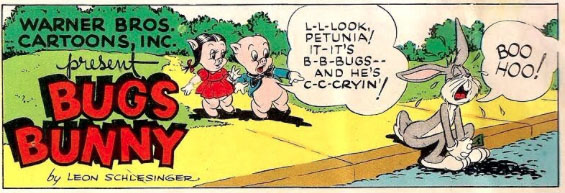
This week’s moonlighting Golden Age animator touches upon the extensive career of Bob’s eldest brother, Tom McKimson!
Born in 1907 in Denver, Colorado, Tom McKimson, along with his brothers Bob and Charles, acquired an artistic background from his mother Mildred, and a robust business ethic from his father Charles Sr. As children. The McKimson brothers worked various duties for their father’s newspaper and printing business, from feeding presses to linotype work. Tom drew illustrations—which could range from political or local events— as required.
After the McKimson family moved to Los Angeles in 1926, McKimson entered UCLA to attend a commercial arts program. He was soon disappointed with their fine arts curriculum, and transferred to the Otis Art Institute, where he took life drawing and painting courses, among others. Tom gained skill as an illustrator before he went to work in animation. He and Bob McKimson illustrated a proposed children’s book, Mouse Tales, written by their mother, from 1927 to 1928. The surviving drawings of the book from Tom McKimson, in particular, appear similar to the later Disney and Harman-Ising house style before those studios established them in the early ‘30s.
Tom worked at Walt Disney’s studio, while attending classes at night; eventually, he left Otis and became an assistant to Norm Ferguson, while Bob worked under Dick Lundy. After they left Disney’s, they worked together at the ultra-obscure Telefilm Studios. An issue of Hollywood Filmograph, dated March 15, 1930, displayed an advertisement for “Monkey Bizness Sound Cartoons.” The advertisement, along with an illustration of the accompanying film (The Bull-Slinger) gives credit to Bob and Tom McKimson for the animation. Little is known about the film, and no documentation seems to survive.
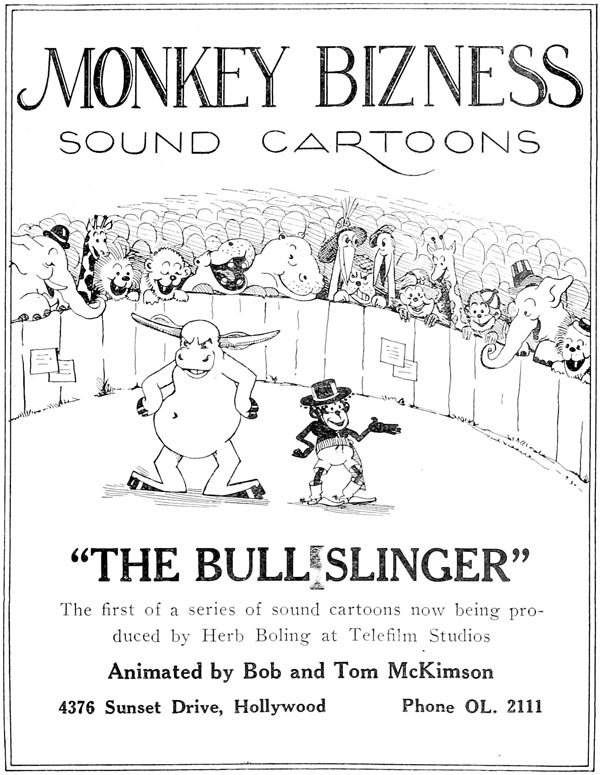
In the spring of 1930, Romer Grey—son of author Zane Grey—opened an animation studio, offering a better salary than Disney. The two brothers served as a guide for the young, inexperienced new animators as they worked on a series of cartoons featuring Binko the Bear Cub. Four cartoons were animated, with only two ready to be made into duplicate prints. (The sole surviving Binko film, Hot Toe Mollie, is available now on Tom Stathes’ Cartoon Roots DVD/Blu-Ray set.) Romer Grey faced difficulties with a distribution deal and income for his animators, so the studio folded in the summer of 1931. The two went to Warners, where they worked under Hugh Harman and Rudy Ising.
When Harman and Ising split from producer Leon Schlesinger in 1933, Bob stayed at Warners, while Tom left to work with them, as they picked up two Cubby Bear cartoons (Cubby Bear’s World Flight and The Gay Gaucho) from the Van Beuren Corporation in New York. In between Harman and Ising’s search for a new distributor, he went back to Disney for a brief period, animating on Silly Symphonies such as The Night Before Christmas (1933) and The Grasshopper and the Ants (1934). In February 1934, Harman and Ising signed a contract with MGM and McKimson soon joined their staff. McKimson was a prolific animator. An October 1934 memo from Harman-Ising’s business manager Gordon Wilson to Ising reveals that McKimson was animating thirty-nine feet a week.

The staff at Cartoon Films Ltd.
Harman and Ising filed for bankruptcy in the summer of 1938, in effect joining the staff of MGM’s newly established animation studio. McKimson moved to Cartoon Films, Ltd., formerly Ub Iwerks’ studio, which specialized in animated theatrical commercials. Cartoon Films, Ltd. also produced a few titles distributed by Columbia Pictures, which can be seen here.
Around 1942, McKimson went back to Warners, in Bob Clampett’s unit, working alongside his brother Bob—the head animator at the studio during this period. He animated on several films, drew various character model sheets, and served as a layout and background artist for Clampett.
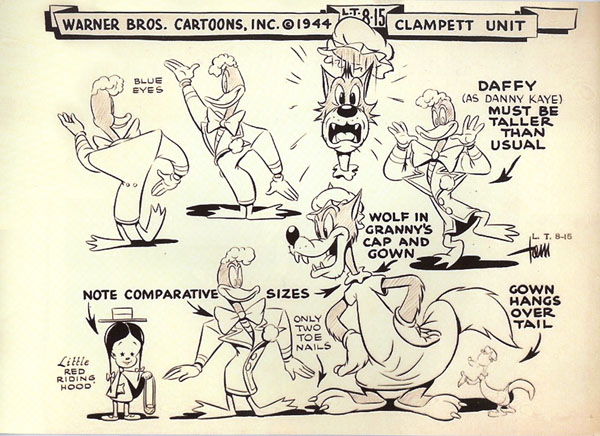
In 1944, McKimson went into freelance work for Western Publishing on the Looney Tunes & Merrie Melodies Comics, published by Dell. He mainly drew, inked and lettered the featured Bugs Bunny stories, where he made slight adjustments to Bob McKimson’s model of the character.
 His freelancing continued, extending to a few special Four Color magazines with the Warners and Disney characters. He worked at the Warners studio during the day and drew the comic book stories for Western at night. A year later, Clampett left Warners and McKimson was moved to Art Davis’ unit, as a layout artist. (He continued to draw model sheets for Davis, too—for instance, 1947’s The Foxy Duckling.) He took an indefinite leave of absence from Warners and became a full-time member of Western Publishing’s staff in 1947.
His freelancing continued, extending to a few special Four Color magazines with the Warners and Disney characters. He worked at the Warners studio during the day and drew the comic book stories for Western at night. A year later, Clampett left Warners and McKimson was moved to Art Davis’ unit, as a layout artist. (He continued to draw model sheets for Davis, too—for instance, 1947’s The Foxy Duckling.) He took an indefinite leave of absence from Warners and became a full-time member of Western Publishing’s staff in 1947.
During his time at Western Publishing, McKimson continued drawing for the comic magazines. In an interview with Michael Mallory conducted in 1992, he stated his preference for drawing comics and picture books over animation: “In animation, you’re shooting for the character, but you’ve got to remember that one frame that you drew a beautiful drawing is only 1/24th of a second, and nobody sees it. You see the overall pattern of the drawings. So, I would rather do the magazines, I love that; the coloring books, I like those because you can develop a character and do the detail — nice eyes and the right kind of nose, and all that. And I not only like doing from the original pencil, but clear up through the inking. I pride myself on the inking and lettering.”
In 1948, McKimson took over as the art director for Western Publishing’s comic books, succeeding Carl Buettner, an old colleague Cartoon Films, Ltd., a few years earlier. He occasionally drew various Golden Books with the Warner Bros. characters, in addition to his editorial duties. As art director of the comics, McKimson gave assignments to an artist after editor Chase Craig approved the script. While he served as art editor for Western, McKimson, along with editor Al Stoffel, established the syndicated newspaper strip featuring popular Western star Roy Rogers, which began its run in 1949, credited with the byline “Al McKimson.”
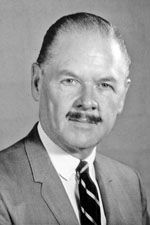
Tom McKimson
Besides supervising issues of comic book magazines with popular animated characters (Warners, Disney, MGM and Walter Lantz), he also handled art direction for various genre comics, along with adaptations of feature films and television shows, among countless others. He retired as art editor in 1972, but came back as a cartoonist after a year, drawing various comic book stories with Bugs Bunny, Porky Pig and “Beep-Beep” the Road Runner at home. In 1984, McKimson left comic book work permanently. By the early ‘90s, he continued to draw mixed media illustrations and designed various lines of products, such as clothing and lithograph cels— each with the Warners characters. McKimson passed away on Valentine’s Day, 1998 at the age of 90.

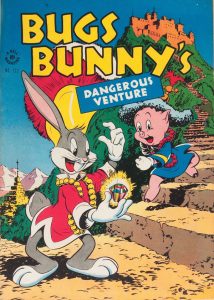 Here is a sample of Tom McKimson’s comic book work, from the Four Color magazines and his later stories from the ‘70s. One of McKimson’s payments sent from Western Publishing reveals a sum of $198 for his work on the “George Washington Bunny” story embedded below—about $2,742.76 in 2017 dollars. The October 1944 date lends clarification into the backlog between finished artwork and final publication.
Here is a sample of Tom McKimson’s comic book work, from the Four Color magazines and his later stories from the ‘70s. One of McKimson’s payments sent from Western Publishing reveals a sum of $198 for his work on the “George Washington Bunny” story embedded below—about $2,742.76 in 2017 dollars. The October 1944 date lends clarification into the backlog between finished artwork and final publication.
• “George Washington Bunny”—Looney Tunes and Merrie Melodies Comics #41 (March 1945) Thanks to Matt Hunter for the scans!
• “Porky Pig’s Adventure in Golpher Gulch”—Four Color #112 (July 1946).
• “Brer Rabbit Visits De Witch”—Four Color #129 (December 1946).
• “Bugs Bunny and the Haunted Mountains”—Four Color #142 (April 1947).
• “Dr. Jerkyll and Mr. Bugs”—Bugs Bunny #155 (March 1974).
• “Show Biz Bash”—Bugs Bunny #201 (October 1978).
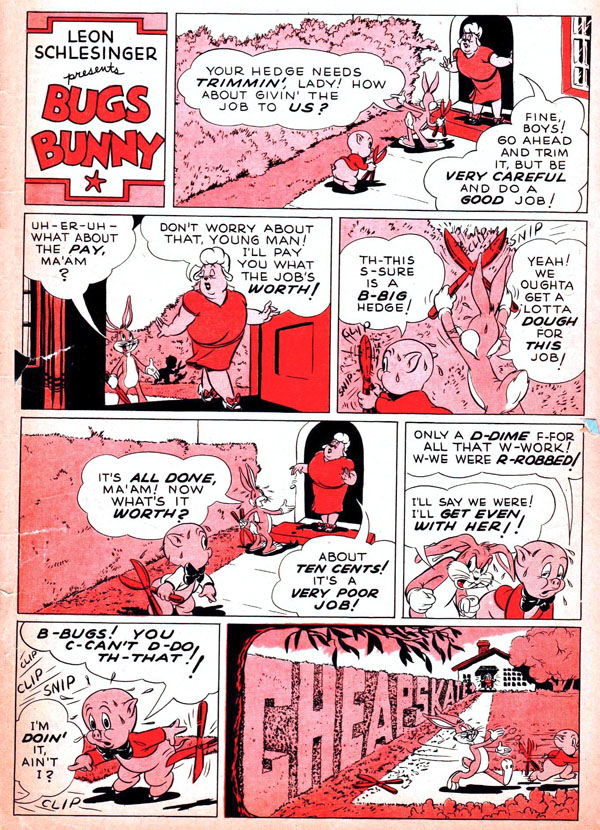
One of McKimson’s earliest known works for Western, for FOUR COLOR #51 (undated, 1944).
Next Month will be dedicated to animator drafts—all from Bob McKimson’s Warners cartoons. You might find some surprises in at least one of them…
(Thanks to Michael Mallory, Michael Barrier, Frank Young and J.B. Kaufman for their help.)


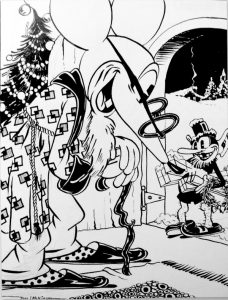
 DEVON BAXTER is a film restoration artist, video editor, and animation researcher/writer currently residing in Pennsylvania. He also hosts a
DEVON BAXTER is a film restoration artist, video editor, and animation researcher/writer currently residing in Pennsylvania. He also hosts a 





















































































Thanks for this article, I have been hoping to learn more of Tom McKimson for some time. Back in the 1990s I purchased a watercolor painting of Pepe LePew done by him, and outside of a few little bits of info, I have known very little about him. I finally have a better understanding of the man who did this painting, which still hangs in my living room.
The recent bio of the McKimson brothers does flesh things out a little bit.
Thanks for publishing this for not much has been printed about Tom. Comic Book Artist has an interesting article about him in their Dell/Gold Key issue published some years ago. I don’t remember the publication date.
Tom and Charles were on HSN® during the 1990s, and I’m gladder than hell that I got several chances to view them.
There’s an Andy Panda story from 1958 with McKimson’s name on a store in the background in one panel.
A very interesting article and web site. I had been fascinated by the cover you posted above (Four Color 123) for ages and finally found a nice copy a short time ago. I was always curious about the artist because the background is so evocative and detailed…I had wondered if it had been done by Carl Barks. Funny to see that McKimson worked with Barks.